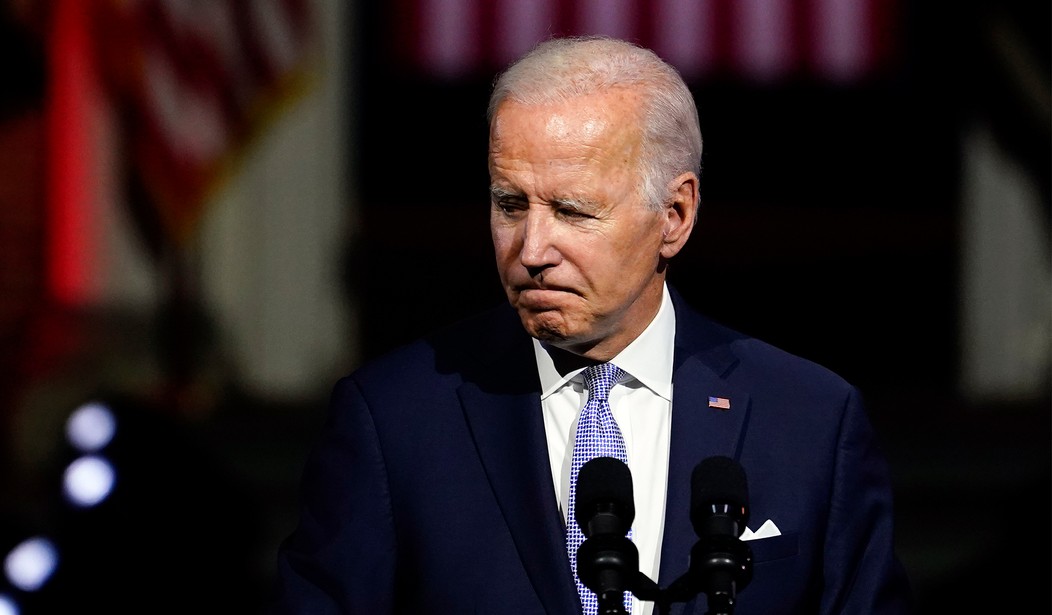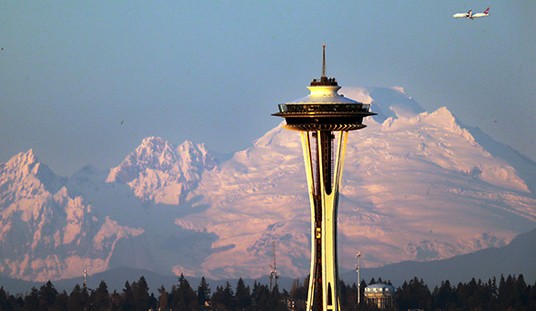Maybe the Fed’s demand destruction has begun to succeed already! That’s the most positive spin from today’s durable-goods report. For the second straight month, new orders fell in August, overall by 0.2% and 0.9% when excluding defense spending. Transportation led the decrease, but several categories fell below the zero line.
And it gets worse than what it looks like, too:
New orders for manufactured durable goods in August, down two consecutive months, decreased $0.6 billion or 0.2 percent to $272.7 billion, the U.S. Census Bureau announced today. This decrease followed a 0.1 percent July decrease. Excluding transportation, new orders increased 0.2 percent. Excluding defense, new orders decreased 0.9 percent. Transportation equipment, also down two consecutive months, drove the decrease, $1.0 billion or 1.1 percent to $92.0 billion.
Shipments of manufactured durable goods in August, up fifteen of the last sixteen months, increased $2.0 billion or 0.7 percent to $272.1 billion. This followed a 0.2 percent July increase. Transportation equipment, up ten of the last eleven months, led the increase, $1.7 billion or 1.9 percent to $88.0 billion.
To be fair, the July decline came after a large increase in June to close out the second quarter. It’s worth noting, however, that Q2’s GDP still landed in negative territory at 0.6% annualized — and would have been around -2.3% if it hadn’t been for an unusually positive trade imbalance in Q2. In fact, Q2 looked pretty good for durable-goods orders, as this chart shows:

Even with the demand shifted into Q2 on durable goods, the economic activity wasn’t enough to push the overall reading out of contraction. Does anyone want to guess what two consecutive drops in overall durable goods will mean for the economy in Q3? Especially with this caveat, emphasis mine:
Figures in text are adjusted for seasonality, but not for inflation.
So this isn’t even a drop in real dollars on orders, but nominal dollars. That means that even fewer goods are getting ordered than these numbers normally suggest. Given that inflation runs at 8.3% right now on the CPI, the actual contraction in real terms will be much more significant.
Of particular concern may be capital-goods orders. These signal the commitment by businesses to future growth, and right now that doesn’t look like a firm commitment at all. After a couple of months of growth — even in July — capital goods orders fell -0.8% overall, and -2.7% in non-defense capital goods orders. This is also primarily a transportation impact, but even that’s not a good signal for future growth on its own. And again, all of this is before factoring inflation into the numbers.
This isn’t the only signal of a recession either coming or having arrived already either. The S&P/Case-Shiller Index shows a sharp reversal in the home-sales markets in July:
Home prices are still higher than they were a year ago, but continued to cool very quickly in July. Prices nationally rose 15.8% over July 2021, and while that is a wide gain, it was well below the 18.1% gain in the previous month, according to the S&P CoreLogic Case-Shiller Indices.
The 10-City composite rose 14.9% year over year, down from 17.4% in June. The 20-City composite gained 16.1%, down from 18.7% in the previous month. July’s year-over-year gains were lower compared with June in each of the cities covered by the index.
“July’s report reflects a forceful deceleration,” wrote Craig J. Lazzara, managing director at S&P DJI in a release, noting the difference in the annual gains in June and July. “The -2.3% difference between those two monthly rates of gain is the largest deceleration in the history of the index.”
That’s not the only signal of a sudden freeze in real estate. The price of lumber has suddenly dropped back to pre-pandemic levels, meaning that the home construction bubble may have popped, although this may be more of an end to lumber hoarding:
Lumber prices have fallen to their lowest level in more than two years, bringing two-by-fours back to what they cost before the pandemic building boom and pointing to a sharp slowdown in construction.
Lumber futures ended Monday at $410.80 per thousand board feet, down about one-third from a year ago and more than 70% from their peak in March, when the Federal Reserve began raising interest rates to fight inflation. …
Wood-pricing service Random Lengths said its framing-lumber composite index, which tracks cash sales in several species, fell last week to $529, down more than 60% from early March. Now that supply issues have eased and the highest mortgage rates in more than a decade have slowed home sales, buyers are no longer hoarding lumber for fear of running out.
“All the urgency over the past two years—‘give me everything you can’—that’s basically over. Lumberyards are not scared of the price going up,” said Michael Goodman, director of specialty products at wholesaler Sherwood Lumber Corp., which his family owns and operates. The Melville, N.Y., distributor sells framing lumber and plywood to building-supply companies, truss manufacturers and shipping-crate makers around the country. “The sexy lumber world is coming to an end, unfortunately,” he said.
The deceleration has been sudden enough that at least one Fed board member now has second thoughts about more rate hikes:
Chicago Federal Reserve President Charles Evans says he’s feeling apprehensive about the U.S. central bank raising interest rates too quickly in its quest to tackle runaway inflation.
Speaking to CNBC’s “Squawk Box Europe” on Tuesday, Evans said he remains “cautiously optimistic” that the U.S. economy can avoid a recession — provided there are no further external shocks.
His comments come shortly after a slew of top Fed officials said they would continue to prioritize the fight against inflation, which is currently running near its highest levels since the early 1980s. …
Asked about investor fears that the Fed didn’t seem to be waiting long enough to adequately assess the impact of its interest rate increases, Evans replied, “Well, I am a little nervous about exactly that.”
“There are lags in monetary policy and we have moved expeditiously. We have done three 75 basis point increases in a row and there is a talk of more to get to that 4.25% to 4.5% by the end of the year, you’re not leaving much time to sort of look at each monthly release,” Evans said.
This isn’t exactly a Mission Accomplished moment yet, however. Even at an upper limit of 3.25%, the Fed’s interest rate is still historically low, and inflation is historically high at more than double that (CPI rate of 8.3%) or nearly double (PCE index rate of 6.3%). The Fed can afford to pause for a month to watch the fallout, but don’t forget that investors have already priced in expectations of a 4.25-4.5% Fed rate by the end of the year. Inflation itself is likely a major cause of whatever contraction we’re seeing, especially given that the report in this case is showing nominal contraction too.
That’s not all the Fed. Some of that is just Americans running out of spending cash.







Join the conversation as a VIP Member